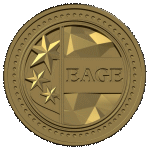Returning to university? Make sure to connect to EAGE to help you gain those essential skills and network needed to get ahead of the curve!
EAGE student activities in 21/22
If you’re interested to see what your future career may look like and keen to expand your skills and knowledge, EAGE is the place to be for you this year. As a multi-disciplinary geoscience & engineering association, we’ve got an extensive programme lined up to complement your curriculum. Whether it is insights into the latest research, soft skills development and exciting team projects, we’ve got you covered!
Upcoming student events
It’s a strong start of the year strong with a variety of student events and projects coming up.
- Student Webinar – Structural Geology of Sedimentary Basins – by Carlos Giraldo, 5 October
- EAGE Annual Conference & Exhibition student activities, 17 – 21 October
- Student Webinar – Seismic Applications for Mining Using Passive Sources – Deyan Draganov, 5 November
Explore EAGE benefits
Students new to EAGE can secure membership for the first year for free, supported by the EAGE Student Fund. In addition, those securing their membership in October will receive up to three additional months of membership.
Students interested to learn more how to get the most out of their EAGE involvement can learn more today!
EAGE Student Chapters
Establishing a student chapter is a great way to get to most out of your EAGE experience. Not only do chapters have a range of perks (including free student membership) but they also provide a great opportunity to connect to other EAGE (student) chapters around the globe.
Setting one up at your uni is easy – all you need is a group of likeminded peers!






